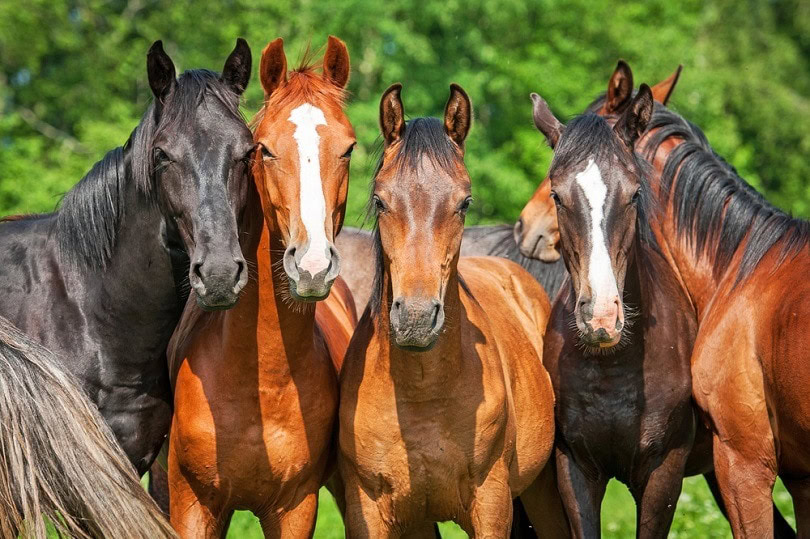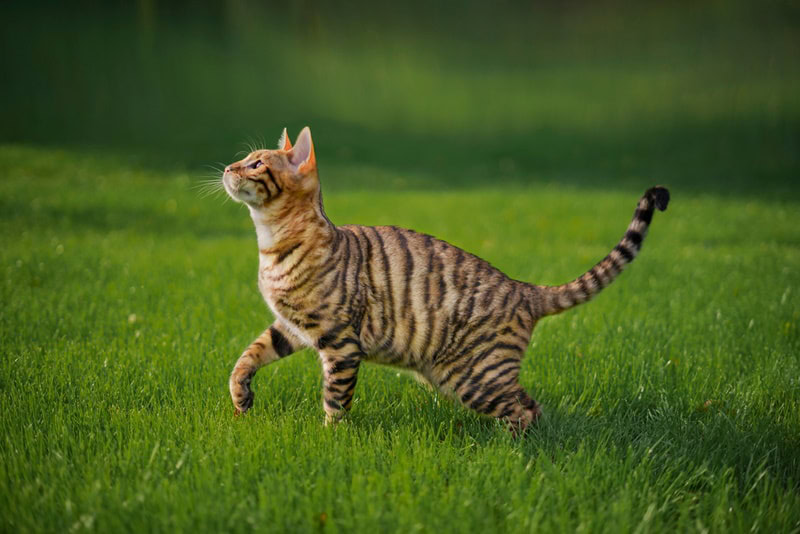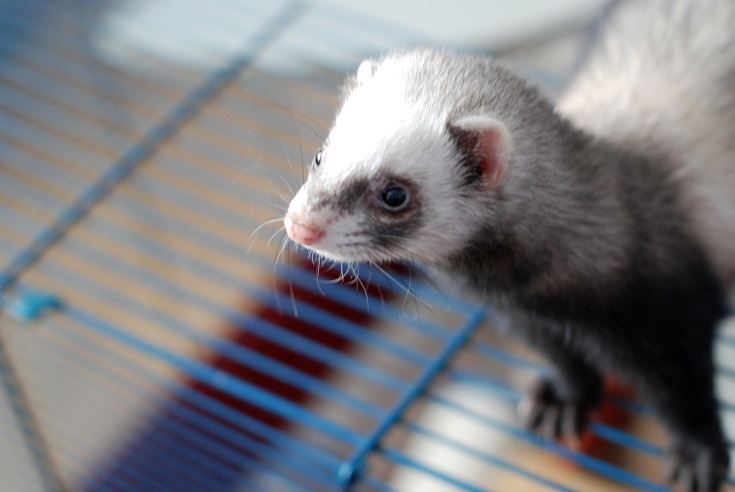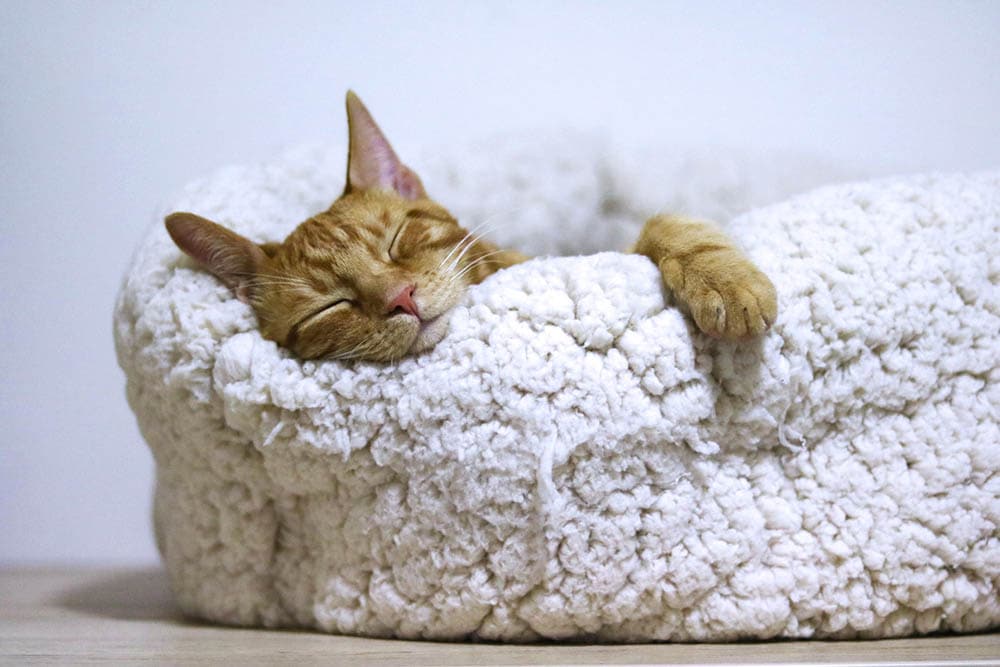Though horses appear in many colors, there are only two base color genes: chestnut and black. Bay horses have an additional one called the agouti gene that controls how their black hairs are distributed. Because of that, bay horses have black points, but their bodies are a shade of brown. All bays have black on their manes, lower legs, and tails, but the shade of brown on their bodies can vary widely from a light red to a deep brown, which is easily mistaken for black.

The 6 Bay Horse Colors
1. Black Bay Horse
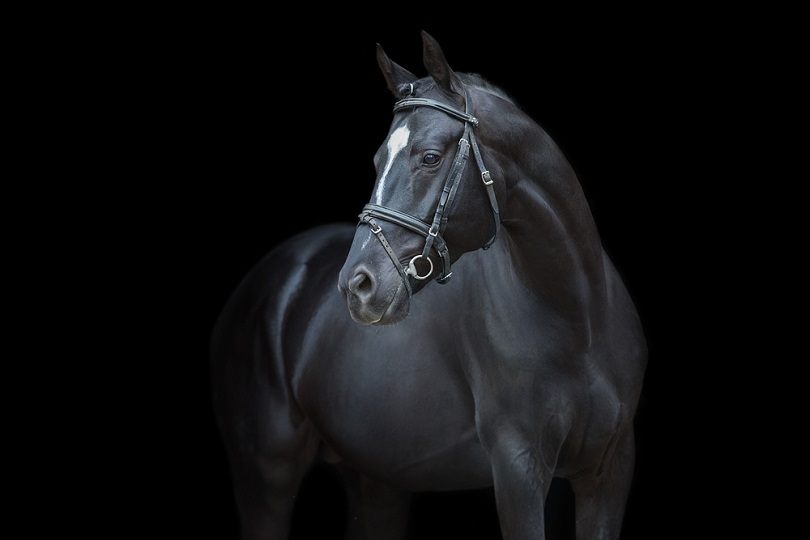
Black bays are the darkest bay horses. They often appear to be truly black, but DNA testing reveals the agouti gene present. They generally have a brown muzzle and flanks, though the rest of their body is nearly black.
2. Dark Bay Horse
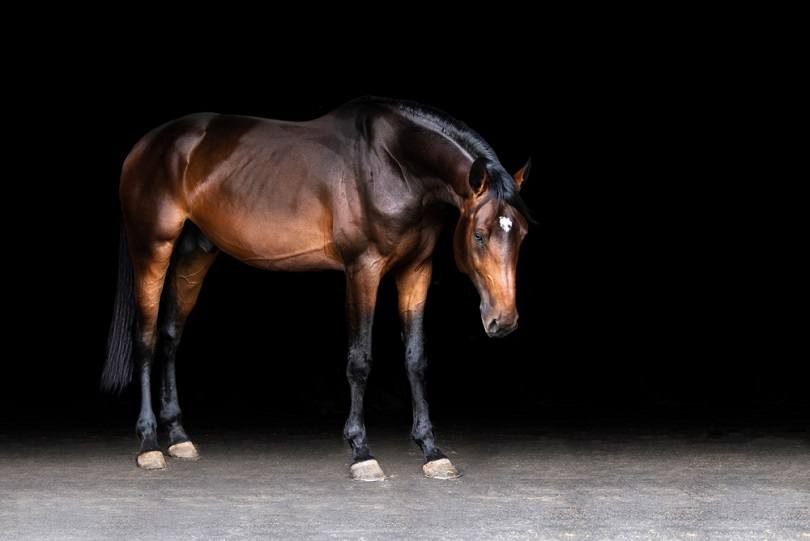
Dark bays are also often mistaken for black horses. These horses aren’t quite as dark as Black bays, but they’re not too far behind. Like all bays, they have black points.
3. Blood Bay Horse
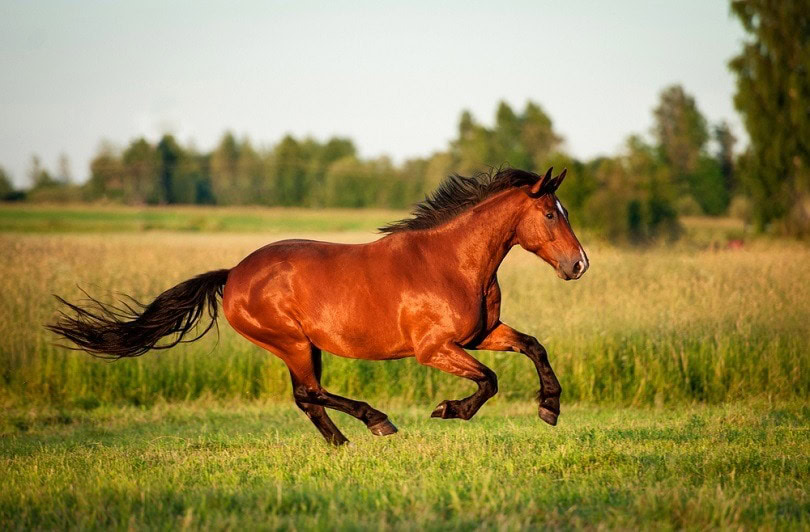
Blood bays are the most widely known type of bay. Their coats are dark red, very close to a chestnut coloration, but with black points.
4. Mahogany Bay Horse
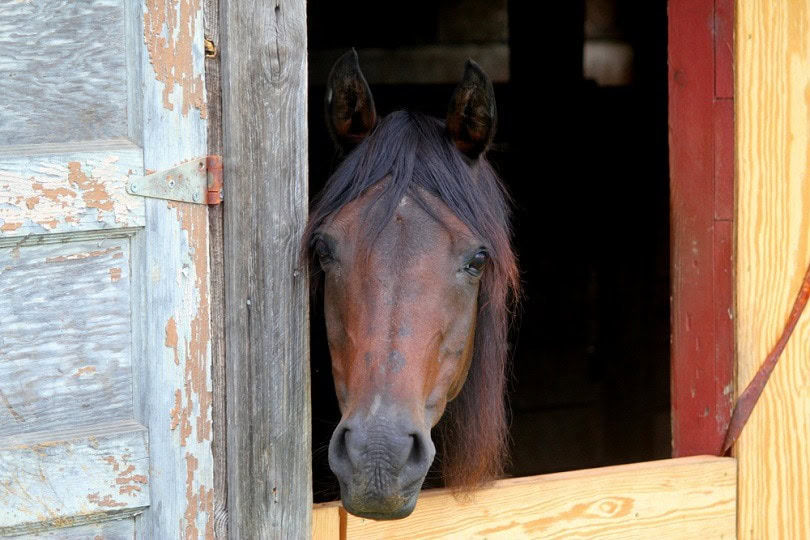
Although similar to Blood bays, Mahogany bays have browner hair with a red hue.
5. Wild Bay Horse
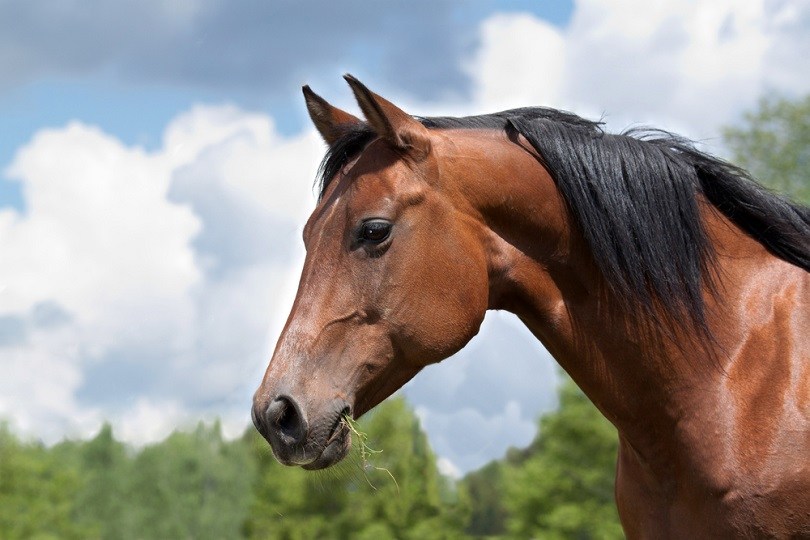
Wild bay horses have lighter coats than most other bays. Furthermore, they usually have a light-colored muzzle, often white. They are also called Pangare or Mealy bays.
6. Brown Bay Horse
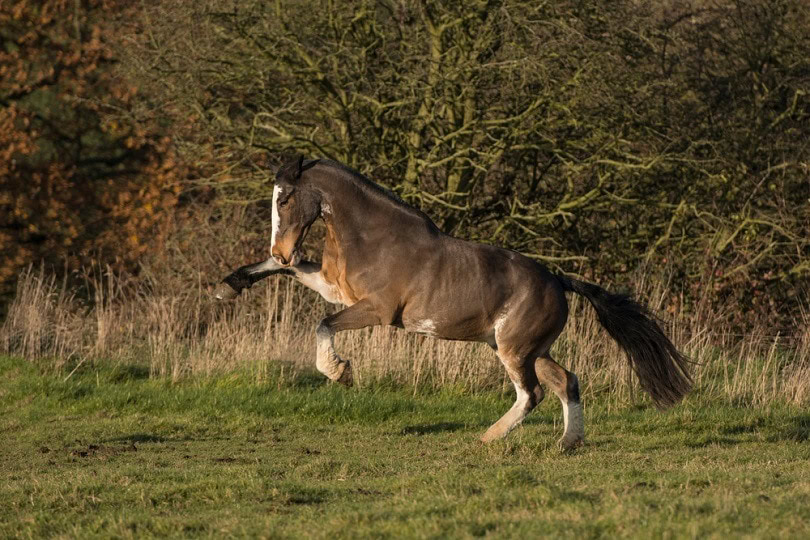
Brown bays have a brown coat with black points.

Final Thoughts
There are many types of bay horses, and each one is beautiful. What’s common to all of them are the black points that differentiate them from other color patterns. If you see a horse with similar coloration and no black points, they’re most likely a chestnut.
Featured Image Credit: Rita_Kochmarjova, Shutterstock
